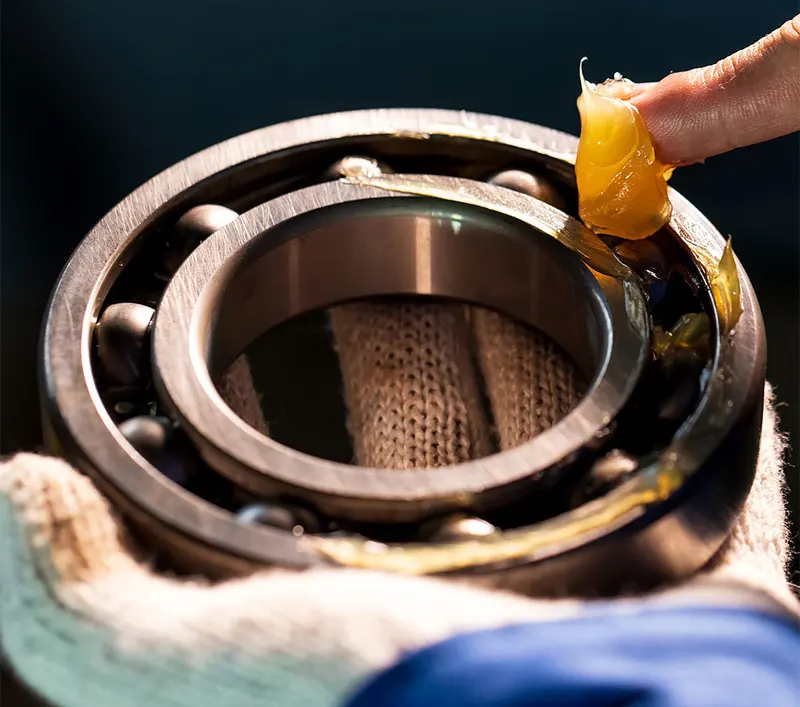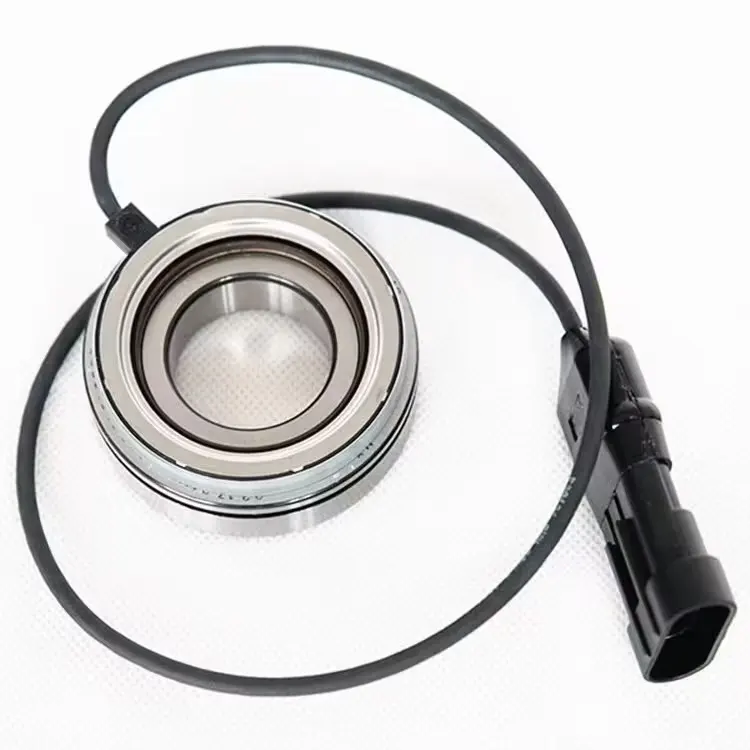Introduction
The rapid growth of electric vehicle industries brought a whole new phase to automotive engineering, emphasizing efficiency, sustainability, and performance. Thus, the componentry providing seamless functioning for these vehicles has also become integral to this evolution. Foremost among such components will be taper roller bearings with their critical role to play as elements that precisely meet the unique demands of electric mobility.
Overview of the EV Industry and Its Demands of Bearing
This global movement toward electrification, especially the unparalleled growth in the EV sector, is reflected in market analyses that place the projected value of the electric vehicle-bearing market at $64.73 billion by 2032 while developing at a CAGR of 32.14% during 2024-2032. This surge is driven by increasing environmental concerns, technological advancements, and supportive government policies promoting clean energy transportation.
Consequently, bearings in EVs will see higher rotational velocities and unusual load distributions compared with the more conventional ICE transport modes. The absence of engine noise in EVs puts an additional premium on the need for components that keep operational noise and vibration to a minimum. Thus, bearings in EVs should provide:
- High-speed capability : Electric motors make rapid rotations, which the design must accommodate.
- Improved energy efficiency : To maximize the range per charge of the vehicle.
- Superior heat management : To handle the thermal stresses associated with high-speed operations.
- Noise and vibration reduction : For a quiet and smooth drive.
Why Taper Roller Bearings Are Critical in EVs
The tapered roller bearings are designed for both radial and axial loads, making them perfect for a wide range of automotive applications. In the case of EVs, their importance has increased manifold due to the following reasons:
- Load-carrying capability: Most of the EVs are equipped with heavy battery packs, making the entire vehicle weight heavy. Therefore, taper roller bearings bear such loads with efficiency.
- Durability and reliability: The strong construction of taper roller bearings means durability, hence less maintenance and increased reliability of the vehicle.
- Thermal performance: Their design promotes better heat dissipation, which is cardinal in keeping performance under thermal stresses from high-speed electric motors.
- Energy efficiency: Inventions in taper roller bearing design have reduced friction and directly improved energy efficiency, elongating the range of the vehicle. For instance, the 7th generation of low-friction taper roller bearings from NSK has attained an average friction reduction of 20%, further improving vehicle range through better electrical consumption.
Challenges Specific to EVs
The transition from ICE vehicles to EVs introduces specific challenges that impact bearing performance and design.

High-Speed Applications
The electric motors of EVs run at much higher speeds compared to combustion engines. This naturally increases the requirement for bearings with higher rotational velocities without any loss of performance. The taper roller bearing would be perfect, which has the capability to take on combined loads and also shows good stability at high speeds. Yet, continued development is required because of rising speed needs.

Innovations in Taper Roller Bearings for EVs
There have been quite a few introductions of various innovations in taper roller bearing technology from manufacturers with the need for very stringent demands made by the EV industry.

Energy Efficiency and Heat Management
Energy efficiency is, therefore, crucial to ensure that EVs cover considerable distances on each charge of the battery, while frictional loss from every bearing is at a minimum. Adding to energy efficiency, electric motor operations can be at considerably high speed generating a lot of heat from within that needs to be controlled effectively through appropriate heat-dissipating mechanisms. Different advanced materials and lubricant technologies will continue the development of new-generation tapered roller bearings to deliver top operational performance and lifecycle in extreme conditions.

Lightweight Materials to Reduce Vehicle Weight
EV efficiency and range first depend on reducing vehicle weight. Thus, bearing manufacturers pursue lightweight materials for their bearing components made of advanced polymer and ceramic material to replace ordinary steel in some places for similar strengths and durability with a share in overall low weight. A good instance is that bearings with more use of ceramic materials keep the overall weight lower at the same time as improvement in the tribological performance of electric vehicles with its excellent heat and friction-reducing characteristics.

Advanced Lubricants for Higher Efficiency
In bearings, lubrication is very important in the high-speed and high-temperature conditions of EVs. Advanced lubricants are in development to provide:
- Improved thermal stability : For maintaining performance over a wide range of temperatures.
- Reduced friction : To improve energy efficiency and prolong the life of bearings.
- New materials compatibility : Lubricants have to be compatible with new bearing materials.
These lubricants will play a crucial role in the efficiency and reliability of taper roller bearings in EV applications.
Noise and Vibration Reduction Technologies
The quiet operation of EVs puts much more emphasis on making as little noise and vibration from any component. Bearing manufacturers use design features and materials in their construction to reduce noise and dampen vibration. The development of the following was made possible:
- Optimized internal geometries : Allow for smoother rolling contact and, as a consequence, reduce noise generation.
- Advanced sealing solutions : To avoid the entrance of any contaminant into the bearing, ensuring smooth operation.
- Damping materials : Those that are inserted into bearing housings in order to absorb vibration.
These further improve the driving experience by providing not only quieter but also smoother vehicle operation.
Comparative Analysis
Understand the performance of taper roller bearings relative to other bearing types in EV applications. Partnering with a reliable taper roller bearing company ensures the highest quality and performance standards for your EV components.
Performance of Taper Roller Bearings Compared to Other Bearing Types in EVs
- Ball Bearings : Although they are used commonly today because of the low friction level, they are suited for a high operational speed, too. However, such bearings may be less sufficient in resisting combined radial or axial loading in comparison with tapered roller bearings. In addition, ball bearings may also require a higher frequency of maintenance in conditions of high-load operation.
- Cylindrical Roller Bearings : These bearings can bear high radial loads but are less effective with axial loads. Conversely, taper roller bearings support both load types quite effectively and are, therefore, more versatile for a wide range of EV applications.
- Needle Roller Bearings : Although very effective in applications where the radial space is minimal, needle roller bearings provide the highest load-carrying capacity; however, as compared to taper roller bearings, they might lack adequate durability and heat management under high speeds in an electric vehicle.
Recent studies have demonstrated that optimized taper roller bearings can reach power loss levels of deep groove ball bearings at a fraction of the envelope size and, therefore, are considered to contribute significantly to efficiency in electric vehicles.
Applications Within EVs
Taper roller bearings play a vital role in many important parts of electric vehicles.
Role in Transmissions, Differential Systems, and Wheel Hubs
- Transmissions : In EVs with multi-speed transmissions, taper roller bearings support gear shafts for smooth power delivery, accommodating both radial and axial loads.
- Differential Systems : These bearings take care of the motion of the inner gears within the differential while managing combined loads resulting from torque distribution between wheels.
- Wheel Hubs : The taper roller bearings in the wheel hubs support the weight and take all kinds of impacts from road surfaces to give stability and handling to the vehicle.
How They Improve Overall Vehicle Performance
By efficiently managing loads, reducing friction, and enhancing durability, taper roller bearings contribute to:
- Improved energy efficiency : Lower friction leads to reduced energy consumption, extending vehicle range.
- Improved safety : The dependably consistent performance of bearings will ensure predictable handling and braking.
- Reduced maintenance costs : With rugged bearings, replacements are less common and also cut down the work cost.
- Smarter driving experience : Noise and vibration reduction technologies create a better experience for occupants.
Future Trends and Developments
With the continuous development of the electric vehicle industry, so too are the technologies of its critical components-taper roller bearings-pacing at the same level. Key trends and improvements are leading to bearings capable of meeting current demands but also anticipating future requirements.

Integration of Smart Bearings with Sensors
Some of the latest and most exciting innovations in bearing technologies are the integrations of smart sensors. These are sensors embedded within the bearings, which make for the real-time monitoring of a number of parameters such as:
- Temperature : The prevention of overheating by alerting the system in case of crossing thermal thresholds.
- Vibration analysis : Identifying wear or misalignment at an early stage.
- Lubrication levels : Ensuring consistent lubrication for optimal performance.
- Load stress : This would be the ability to detect and respond to abnormal load conditions.
Smart taper roller bearings can further improve predictive maintenance strategies by continuously feeding vehicle management systems with data. Reduced downtime, improved safety, and prolongation of components' life are the beneficial consequences of this. Preparing bearing solutions for a life cycle with sensors integrated into the bearing, companies like SKF and Schaeffler are already working on solutions to meet specific EV demands.
Sustainability and Recycling in EV Bearings
Sustainability forms one of the founding pillars of the EV industry, and bearings are no exception. Innovations focus on:
- Recyclable Materials : Application of friendly environmental materials, such as bio-based polymers in bearing production, and easy-to-recycle metals.
- Extended Life Cycle : Coatings and treatments that extend bearing life are proliferating, greatly reducing the likelihood of their generation of waste.
- Energy-Efficient Manufacturing : Minimize carbon emissions in production with the use of appropriate processes.
Besides, the concept of bearing end-of-life management is also spreading. Several programs for re-manufacturing and recycling bearings are under study and in harmony with the trend of circular economy principles automakers have been embracing of late.
High-Performance Coatings and Surface Treatments
Manufacturing companies, therefore, are in considerable investment in advanced coatings that improve bearing performance for extreme conditions in EV applications, such as:
- Diamond-like carbon (DLC) coatings : Low friction, high wear resistance, and excellent heat dissipation.
- Ceramic coatings : Provide better insulation against electrical currents, which is highly desired in EV motor applications.
Such treatments further extend the service lives of bearings, providing steady performance even in challenging operating conditions.
Miniaturization and Customisation
The compact designs of EVs call for bearings that can help keep the size to a minimum and the performance at a maximum. Taper roller bearings are being miniaturized without losing their load-carrying capacity and durability. Besides, manufacturers provide customized bearing solutions according to specific EV models and applications. This ensures optimum integration and performance, thus supporting the diverse needs of the industry.
Conclusion
The taper roller bearings are becoming up as indispensable components in the electric vehicle revolution. With their unique ability to handle combined radial and axial loads, added to the new developments in materials, lubrication, and noise reduction, they are perfectly suited for the high demands of EVs. Innovations such as the use of lightweight materials, smart sensor integration, and sustainable practices are redefining the potential of these bearings.
That said, the growth of taper roller bearings would further note a rise corresponding with industrial development in the engineering and technology fields. Capable of offering frictionless energy efficiency and enabling predictive maintenance, the components continue to shape the future of electric mobility. Besides the emerging trends in the industry for the modern electric vehicle-today more intelligent, quieter, and more efficient taper roller bearings do it right for the future in a sustainable way to meet the challenges.
This confluence of innovation and demand underlines the transformative role taper roller bearings play in setting the trajectory of the electric vehicle market. Be it increasing the range of vehicles, their reliability, or even further sustainability, these bearings are undoubtedly key players in driving the future of transportation.